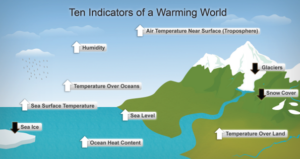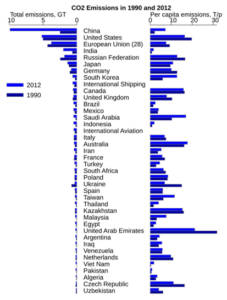One of our client, a top French Telecom company that started its services in order to provide a better mobile service and packaged internet services at a competitive price has been concerned about ESG way back since 2003 to address the climate change.
The Procurement function is here the key support for this Telco company transformation with implementing solutions and training its users to monitor ambitious ESG targets.
They have defined an ESG Policy that includes ambitious targets validated by SBTi . Targets that are focussing especially on the carbon footprint with -50% of carbon emission for scope 1&2; -30% of carbon on their value chain for scope 3 and +50% of renewable energies usage by 2030.
Environmental, Social, and Governance: A set of complex norms from various organisation or a new standard model and an opportunity for the Century?
“The USA innovates, China replicates and Europe regulates” This cynical joke by Mrs Emma Marcegaglia, former President of the Cofindustria on RGPD is showing a growing concern on European countries to remain competitive with Americas and APAC. Nonetheless none of these economical concern will prevent us from addressing the more than legitimate growing concern of the population of the impact of our economies on our planet. In the same line the respect of an ethical business and fair way to conduct business and treat people is an also crucial preoccupation.
The initial milestone in the ESG awareness and absolute necessity to turn ideas into policies and measurable actions came with United Nations Conference on Sustainable Development in Rio de Janeiro in 2012. It came logically after Millennium Development Goals (MDGs) which tangible results can be viewed here that was also initiated by the United Nations.
It is during the Sustainable Development Summit in 2015 that the famous United Nations 17 SDGs were defined:
Just as a reminder the United Nations agreements were signed in 1945 after WW2 and with 193 countries to date and 38.000 people it has and an operating budget of 3.4B USD. The initial United Nations Conference on the Human Environment was held in Stockholm, Sweden, during June 5–16, 1972.
The second important milestone is the Cop 21 held in Paris in 2015. The main outcome of this conference being the legally binding agreement adopted by 196 parties with a goal to hold “the increase in the global average temperature to well below 2°C above pre-industrial levels” and pursue efforts “to limit the temperature increase to 1.5°C above pre-industrial levels.”
The focus of COP 21 was on global warming:
And also on the reduction of greenhouse gas emissions. We can see in the following chart the evolution in 12 years of the CO2 emissions per country and per capita:
The COP 21 was followed up by 8 editions: you can find the details here.
It led to the creation of the Science Based Target initiative : SBTi & subsequently the European CSRD .
The key differences between both can be summarised as follow:
The Corporate Sustainability Reporting Directive (CSRD) and the Science-Based Targets initiative (SBTi) serve distinct but complementary purposes in advancing corporate sustainability. Here’s a breakdown of their key differences:
| Aspect | CSRD | SBTi |
| Purpose | A regulatory framework for sustainability reporting in the European Union. | A voluntary framework for setting emissions reduction targets aligned with climate science. |
| Focus | Broad sustainability reporting, including environmental, social, and governance (ESG) topics. | Focused exclusively on climate change mitigation and science-based emissions reductions. |
| Scope | Covers a wide range of ESG metrics, including non-climate-related issues like social impact and governance. | Primarily addresses greenhouse gas (GHG) emissions and climate-related goals. |
| Mandate | Mandatory for qualifying companies under EU jurisdiction. | Voluntary, though increasingly adopted to demonstrate climate leadership. |
| Standards/Frameworks Used | Aligns with the European Sustainability Reporting Standards (ESRS). | Aligns with the Paris Agreement and global climate science. |
| Applicability | Targets large companies and listed entities operating in the EU. | Open to companies worldwide across industries. |
| Verification | Requires third-party assurance for reported data. | Requires third-party validation of emissions targets for official approval. |
| Outcomes | Enhanced transparency and comparability in ESG reporting. | Measurable, science-backed climate action plans for achieving net-zero goals. |
| Timeframe | Ongoing, with phased implementation starting in 2024. | Targets are typically long-term (5-15 years) and tied to specific emissions milestones. |
While the CSRD establishes a comprehensive framework for reporting sustainability performance, the SBTi provides a focused pathway for companies to align their climate targets with global efforts to limit warming to 1.5°C. Together, they enable organizations to demonstrate accountability and take meaningful action on sustainability.
Anticipating mandatory regulations:
Let us zoom on our client as an example of anticipation in regulations and proactively adhering to SBTi: the implementation of a new Source To Contract Solution with Ivalua, the technological partner of Cyrias, was the opportunity to lay down the fundamentals of this Telco specific ESG policy. It is also the base for supplier score on ESG and KPI’s on decarbonation.
SRM: The base of the system implementation is the Supplier Relationship Management solution that ensures up to date Single Source of Truth for the supplier data. It is also an opportunity to enrich the Ivalua 360° supplier view with a supplier scorecard with 70 questions to evaluate the supplier annually as you would do in a Request for Information and have real time view on the supplier ESG score. This score is supported by the Ecovadis integration to sharpen the score of the supplier.
The SRM module is also used to share updated ESG information in order to educate the suppliers and share the updated policies and relate targets. It will be also used to push information to prepare the suppliers annual conventions.
Sourcing module: The consultation of suppliers through the Request For Quotation process in Ivalua Sourcing enables dedicated questionnaires per categories and a visibility at the article level.
It will enable the Buyer to evaluate a supplier with a notion of carbon footprint at the article level (i.e a mobile phone) to consolidate a global score weighted by the volume in order to compare several suppliers on their carbon footprint.
Afterwards this carbon footprint score will be part of the supplier evaluation alongside with other metrics ( price, Leadtime, etc.) to award the business with the SBTi targets in mind to the best supplier.
Conclusion
The implementation of the Ivalua Source-to-Contract Solution by Cyrias has laid a robust foundation for the evolving Telco ESG policies. The SRM module has established a centralized, up-to-date repository for supplier data while enabling comprehensive supplier ESG evaluations with enriched scorecards. The Sourcing Module enables a drill-down view to the supplier carbon footprint.
By embedding these ESG considerations into supplier evaluations and procurement processes, our client positions itself as a leader in sustainable procurement while striving to meet SBTi targets and also anticipating mandatory reporting. This initiative exemplifies how procurement innovative technology solutions can drive meaningful progress toward sustainability goals.





